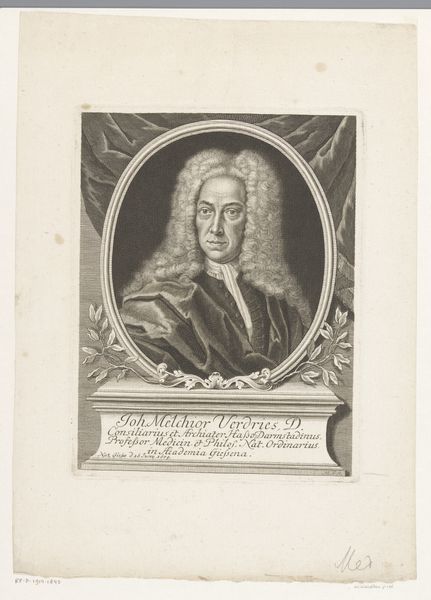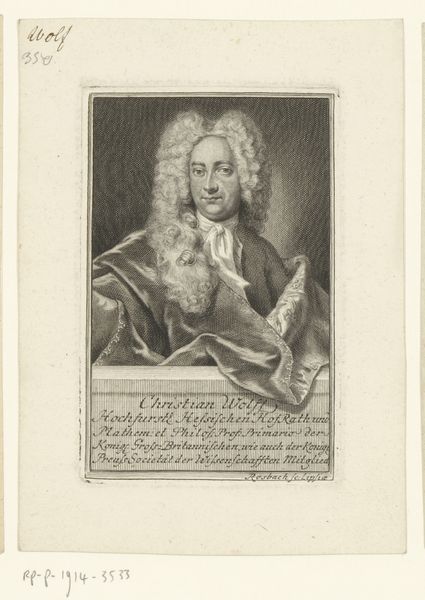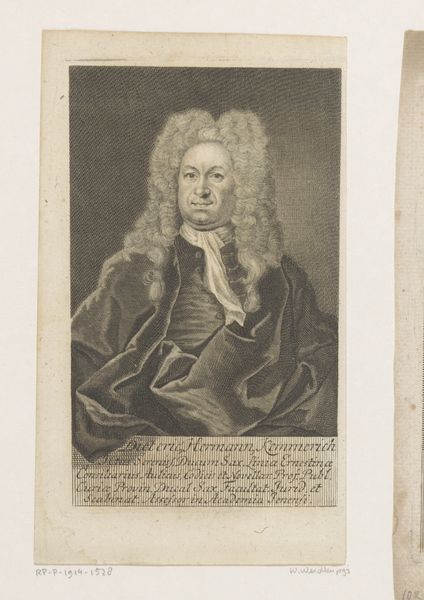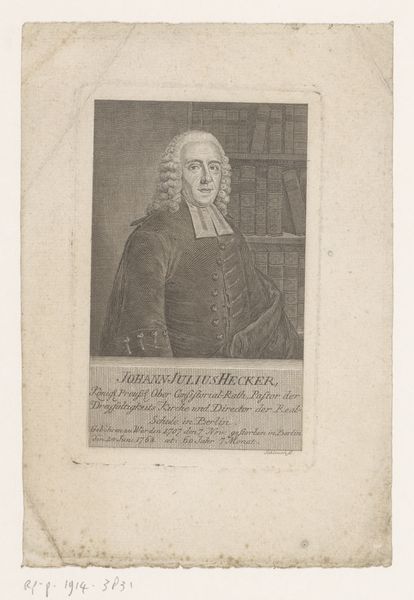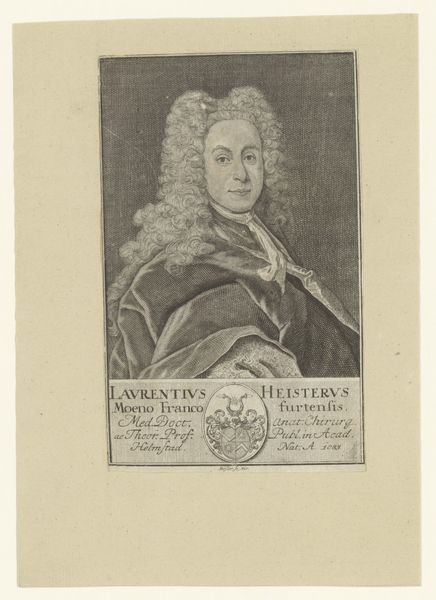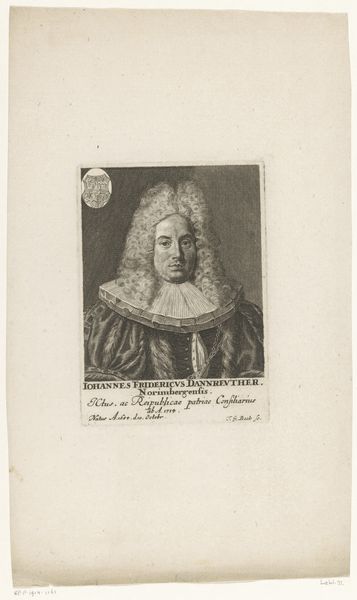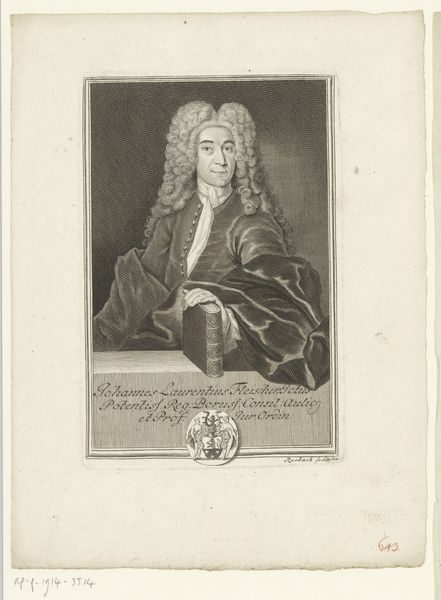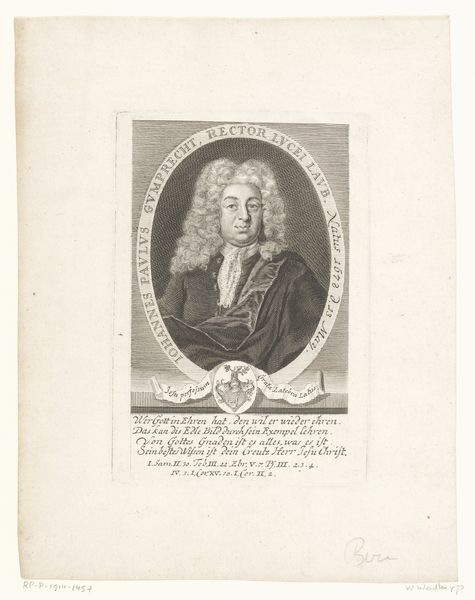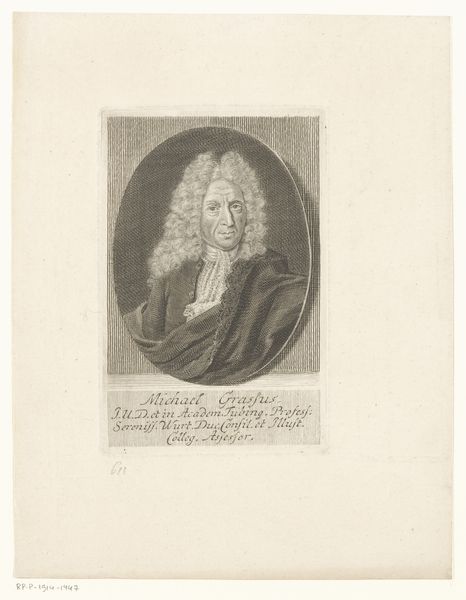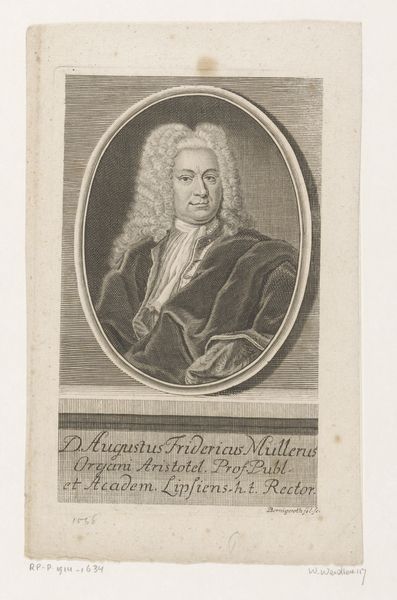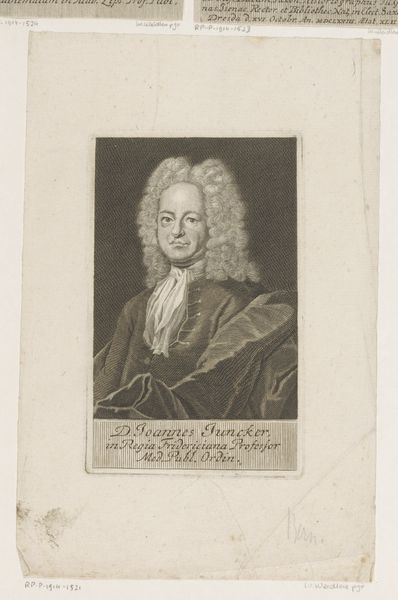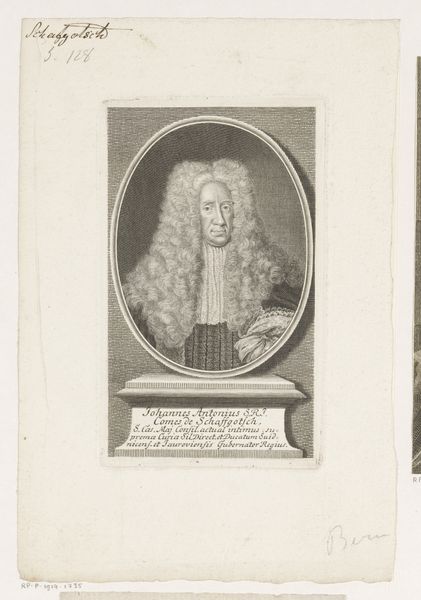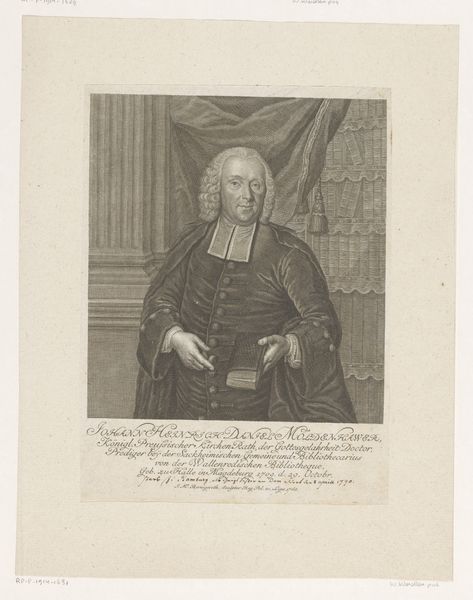
print, engraving
#
portrait
#
aged paper
#
baroque
# print
#
old engraving style
#
academic-art
#
engraving
Dimensions: height 172 mm, width 131 mm
Copyright: Rijks Museum: Open Domain
Curator: Here we have a work by Jakob Hering, a portrait of Johann Melchior Verdries, realized sometime between 1708 and 1735. It's a detailed engraving. Editor: It strikes me immediately how composed Verdries seems, despite the grandeur of the wig and draping behind him. Almost too calm, a bit… unsettling, maybe? Curator: In the context of the 18th century, such a portrayal would have been carefully constructed. Consider the societal role of men like Verdries - a man described as a 'Medicinae Doctor' or Doctor of Medicine in the print itself. His status and the values he represented within the academic and professional spheres would have been paramount. Hering, as the engraver, would be responsible for producing not just an image, but also a symbol. Editor: So, it’s a piece of propaganda, in a way? Promoting a particular image of power and intellect, which makes one wonder, what are the power structures implied? How does Verdries benefit from presenting himself in this light, and whom does it exclude? Curator: I wouldn't go so far as to call it propaganda outright, but yes, image and identity are definitely involved. Prints like these played a crucial role in disseminating images of important figures. Think about how academies, philosophical societies, and nascent scientific institutions sought to validate their presence through the visual representation of its leading lights. Editor: Still, you cannot help but wonder how this carefully manufactured image is received and perceived. What biases were in play, not only for how the person was staged in life but how this translates onto the final medium? Curator: That's a very important point, and it brings us to consider the role of the viewer, both contemporary and present-day, in shaping the artwork's ongoing story. Editor: Indeed. These are essential questions when trying to view the intersectionality of a particular time period, not to celebrate past figureheads. Well, looking at this Baroque engraving has certainly opened up numerous interesting and important lines of enquiry. Curator: Precisely. It highlights the value of critically examining artworks, understanding both their inherent value and the systems that gave rise to their making.
Comments
No comments
Be the first to comment and join the conversation on the ultimate creative platform.
